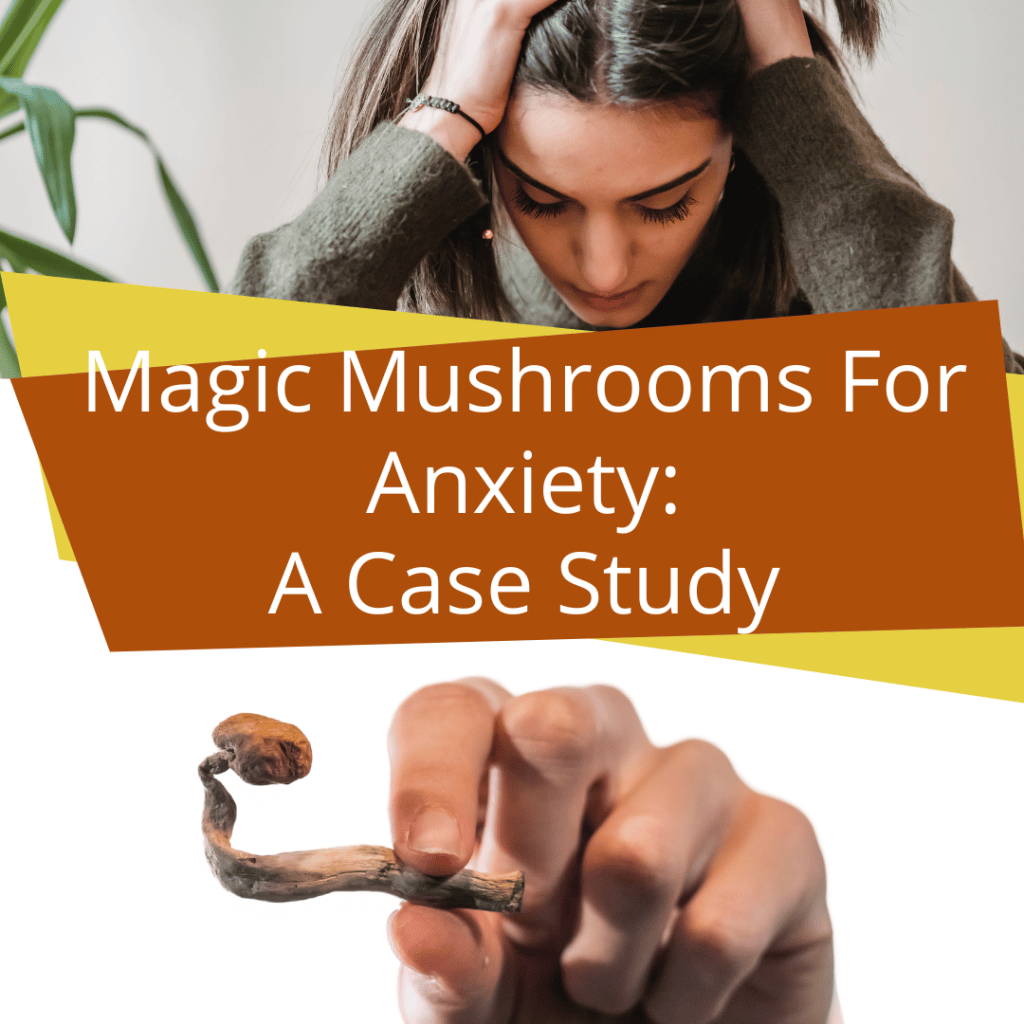Disclaimer: This is an honest and anecdotal discussion of this writer’s experience using magic mushrooms for anxiety and depression. Please be aware that there will be references to depression, suicide, and other related and possibly triggering topics.
That being said, while this article is frank, I will also be keeping my symptom descriptions broad and relatable. This is not a substitute for medical advice from a licensed clinician. I hope you’ll find my experience useful and possibly relatable!
Why Choose Psilocybin Mushrooms to Treat Anxiety?
While I was writing and researching the article’ Magic Mushrooms and Mental Health,’ I became interested in using them for my anxiety symptoms. In the past, I had used psilocybin mushrooms to trip recreationally at doses of about 1 gram and up but hadn’t given much thought to using them as an intermittent, low-dose chronic therapy (microdosing) for anxiety.
Using Cannabis and Psilocybin Together
I have been a cannabis user for 20 years. I’ve never been a heavy user, but I am a daily user, vaping one small bowl as needed throughout the day. I abstain from combustion; my reasons are summarized in our article ‘The Benefits of Vaping Weed.’ My tolerance remains consistent, so I’ve never needed to seek out top-shelf buds or increase my consumption to extract the same levels of enjoyment from cannabis.
I use cannabis to enable states of flow during my workday, to relax after a workout, to ease asthma and anxiety symptoms, but mostly for general recreational enjoyment. When I am completely sober, I become a brutal and relentless self-critic, which can be paralyzing and depressing. Of all the reasons I use cannabis, the blunting of this voice is the most therapeutic.
Combining cannabis and psilocybin use proved to be a completely positive experience, both in intermittent and low-doses. The same can be said about higher recreational doses; however, that is beyond the scope of this article.
I will be referring to raw psilocybin use. I’m all about DIY, so I prefer to use cannabis flowers and raw psilocybin. Later, I will share my recipe for mushroom coffee that simply follows Paul Stamets’ neurogenesis protocol, which is how I prefer to microdose with psilocybin.
SSRIs vs Magic Mushrooms for Anxiety and Depression
Firstly, some context may be helpful. It all started 10 years ago with a pharmaceutical SSRI called Cipralex. I will outline my personal experience using Cipralex to treat severe suicidal depression. Later, I will compare that with my experience using psilocybin mushrooms for mild but persistent anxiety.
My curiosity about using psilocybin to treat anxiety stemmed from previous experience using the pharmaceutical anti-depressant Cipralex. Please note, my depression and anxiety are self-diagnosed. While talk therapy is prohibitively expensive for my taste, I wouldn’t object to receiving its proven benefits.
Using Cipralex to Treat Severe Depression
In 2010, I experienced a suicidal depression, predominantly characterized by extreme anhedonia (a diverse array of deficits in dedonic function, including reduced motivation or ability to experience pleasure) and incessant suicidal ideation. I went to the walk-in clinic, explaining that I was depressed. I was then prescribed Cipralex:
“SSRIs like Cipralex prevent (or “inhibit”) serotonin from being reabsorbed by your nerve cells (a process known as “reuptake”). This keeps serotonin levels more available for longer periods of time in the synapse, which prolongs their effect and helps relieve symptoms of depression and anxiety.” (Toler, 2021)
Upon taking Cipralex, I experienced a total cessation of my sex drive. I had been quite in love with someone at the time and interestingly, experienced a deadening of those feelings within days of SSRI use. Helen Fischer corroborated my experience in a moving TED Talk called ‘Why we love, why we cheat.’ Watch to the end, where “she closes with a warning about the potential disaster inherent in anti-depressant abuse.”
On Cipralex, all emotions were immediately stripped of their extremes and rendered lukewarm. This was the most noticeable collection of SSRI side effects I experienced.
That being said, the suicidal ideation ceased within days, and this was my main reason for seeking pharmaceutical intervention. This positive relief once again allowed me to command more space in my mind to set goals and work towards them. I concluded that career-oriented accomplishments were going to be my primary path out. My life literally depended on a committed plan of action to lean on, so I followed that path.
However, the side effects of Cipralex and SSRIs made the treatment unsustainable in the long run. As the cost of regular therapy was prohibitively expensive, I was essentially just following a prescription and my intuition.
Coming Off Cipralex
After about 7 months, I had put the work in and got to the point where I could actually relax and enjoy myself and people again. At this stage, Cipralex use became an issue, rather than a progressive and meaningful part of my recovery.
One night it only took one glass of wine and a few puffs of a joint to give me a serious case of dizziness and vertigo. I felt nauseous and totally out of control, something I had never experienced before (and I used to party). I realized if I wanted to return to normal, I would have to begin weening myself off Cipralex. Certainly, proponents of pharmaceutical solutions will cry foul here that I would choose wine and cannabis over Cipralex. At the time, this turned out to be the best thing for me, and with the benefit of hindsight, I can say it still is.
Instead of daily, I began taking Cipralex every other day. Then I left two days between doses until I wasn’t taking it anymore. Do not take this as medical advice, this protocol can be incredibly dangerous for some individuals on SSRIs, especially long-term users. What works for me might land someone else in the hospital. SSRIs are serious drugs and should be treated with immense caution.
Could Psilocybin Have Helped With My Severe Depression?
I would say that radical acceptance, hard work, and goal-oriented action were what pulled me out of that depressive episode. Although the Cipralex was essential at the time, my recent experience with chronic, intermittent low-dose psilocybin has made me wonder if I would have had a more side-effect-free experience earlier on in my mental health journey if I had also incorporated psilocybin.
Back in 2010, I had focused primarily on goals, which was appropriate and effective at the time. However, I had avoided a lot of emotional introspection that could have been better facilitated with psilocybin. The SSRI completely dulled any strong emotions I had, rendering me incapable of confronting them. My experience with microdosing psilocybin illustrated how accessible and rich emotions become with its use.
Psilocybin Microdosing Duration and Dosage
I found the work of Paul Stamets to be particularly powerful and convincing. He speaks about workers in Silicon Valley microdosing or even macrodosing to give them an edge in efficiency.
Recently, I was having a hard time adjusting to a job and a boss with a very difficult personality, so it appealed to me that Stamets boasted of the ‘team building’ benefits of mushrooms.
Generally, the recommended microdose protocol is followed for 4-5 days, with 2-3 days off in between periods of use. The recommended starting dose is 50-100mg and to work up as needed and as you become familiar with psilocybin’s effects. Your sex, weight, and other physical factors will affect the dosage. That being said, always start low and go slow. It is better to ‘risk’ feeling nothing than to have a bad trip. Also, if less is more, that’s always a positive thing to discover, especially during a recession!
I started with a high level of comfort with psychoactive substances. My experience on Cipralex was the most immersive, hardcore drug experience I have ever had. So I was unphased eyeballing rather than weighing my doses. I microdosed psilocybin on an almost daily basis for a little over 5 months.
Because I don’t weigh my doses, I go roughly by size and my growing comfort with the process of microdosing. As I urge in all SacredMed articles, I started with small doses and took my time increasing them. The images below show the rough average size of the microdoses I took:
Microdose Magic Mushroom Visual Dosage Guide
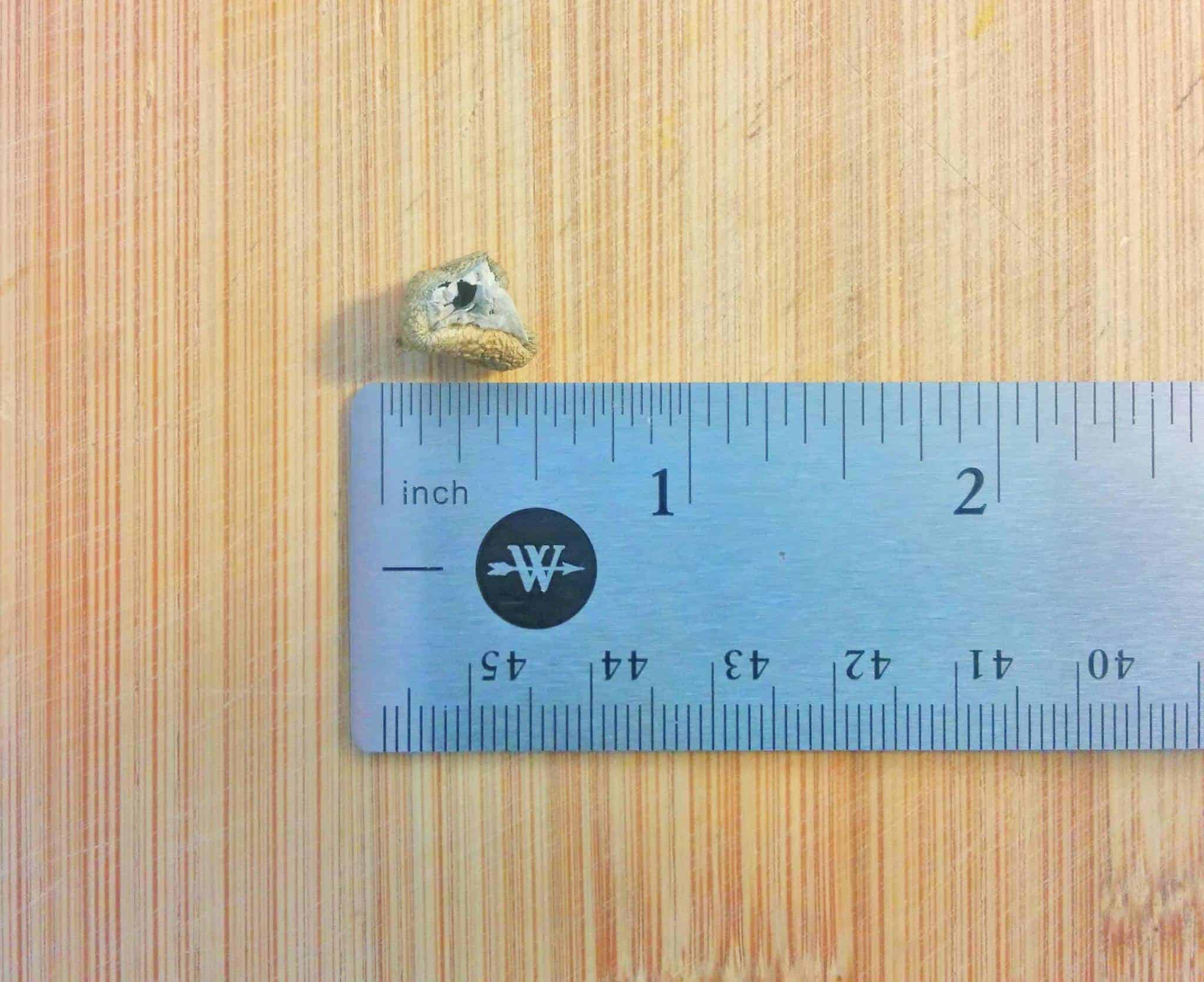
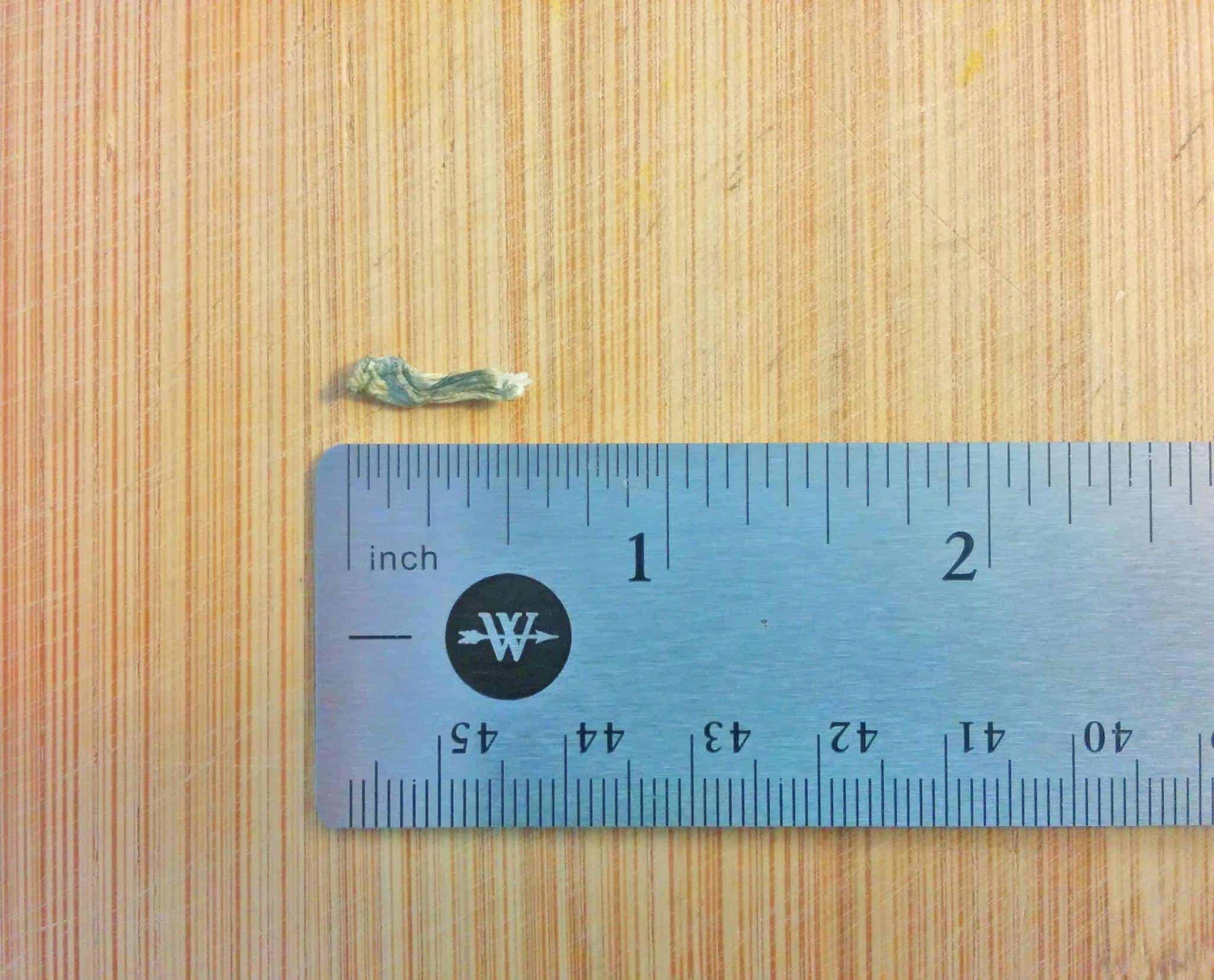
Once I grew more comfortable with daily microdosing, I wanted to begin taking larger doses. My aim wasn’t to trip, but to take increasingly higher doses, intensifying the microdose experience while inching closer to tripping.
I noticed that tolerance to microdoses increased quite rapidly, so I found myself taking multiple microdoses throughout the day, every two hours or so, for 8 hours.
Within about three weeks, I was more than comfortable increasing my dosage to what I will refer to as a macrodose for this discussion. Below is the rough size, although I realize this is still rather small by truly scientific macrodoses, which range from 2g and up.
My Macrodose Magic Mushroom Dosages in Coffee
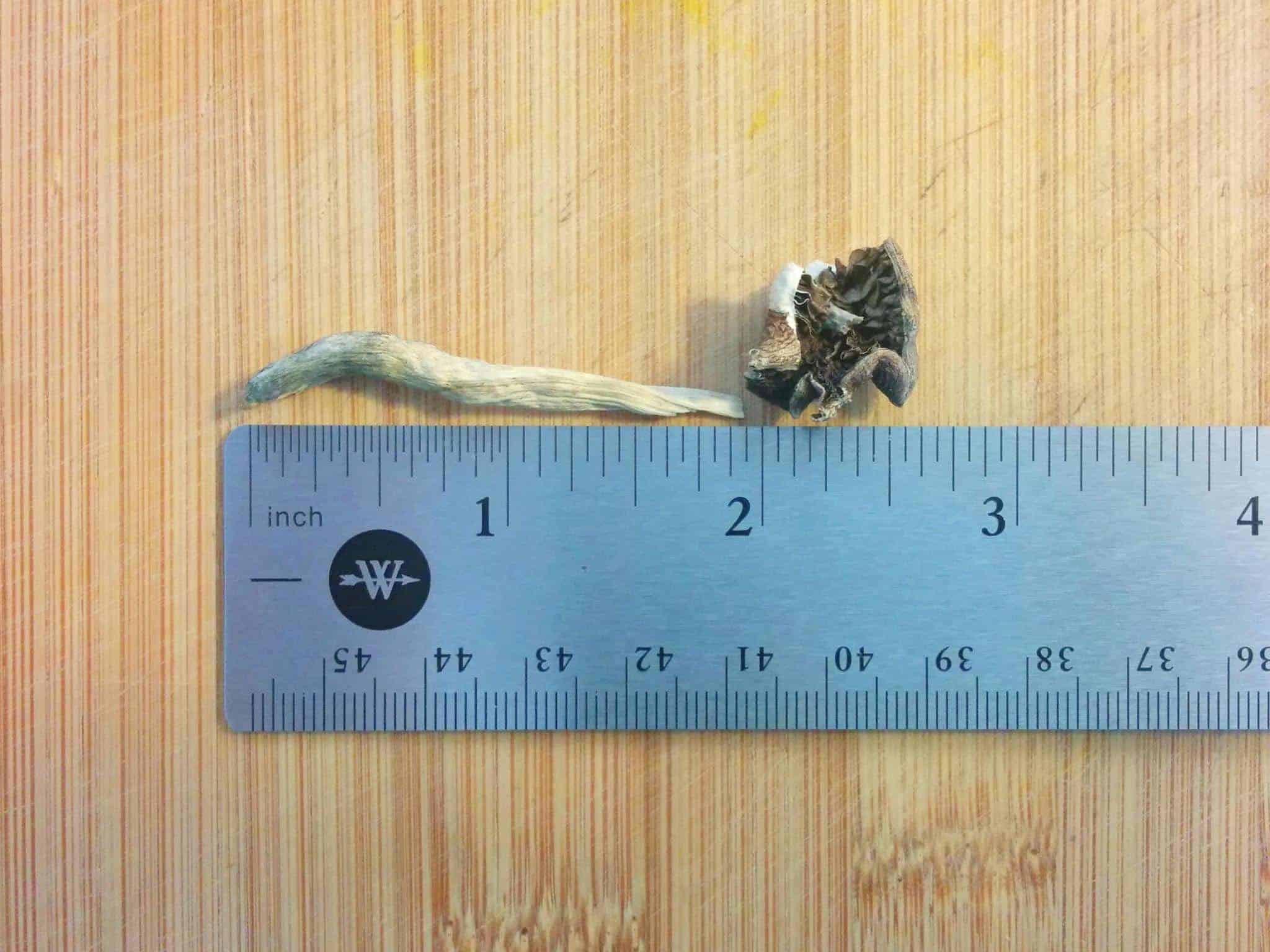
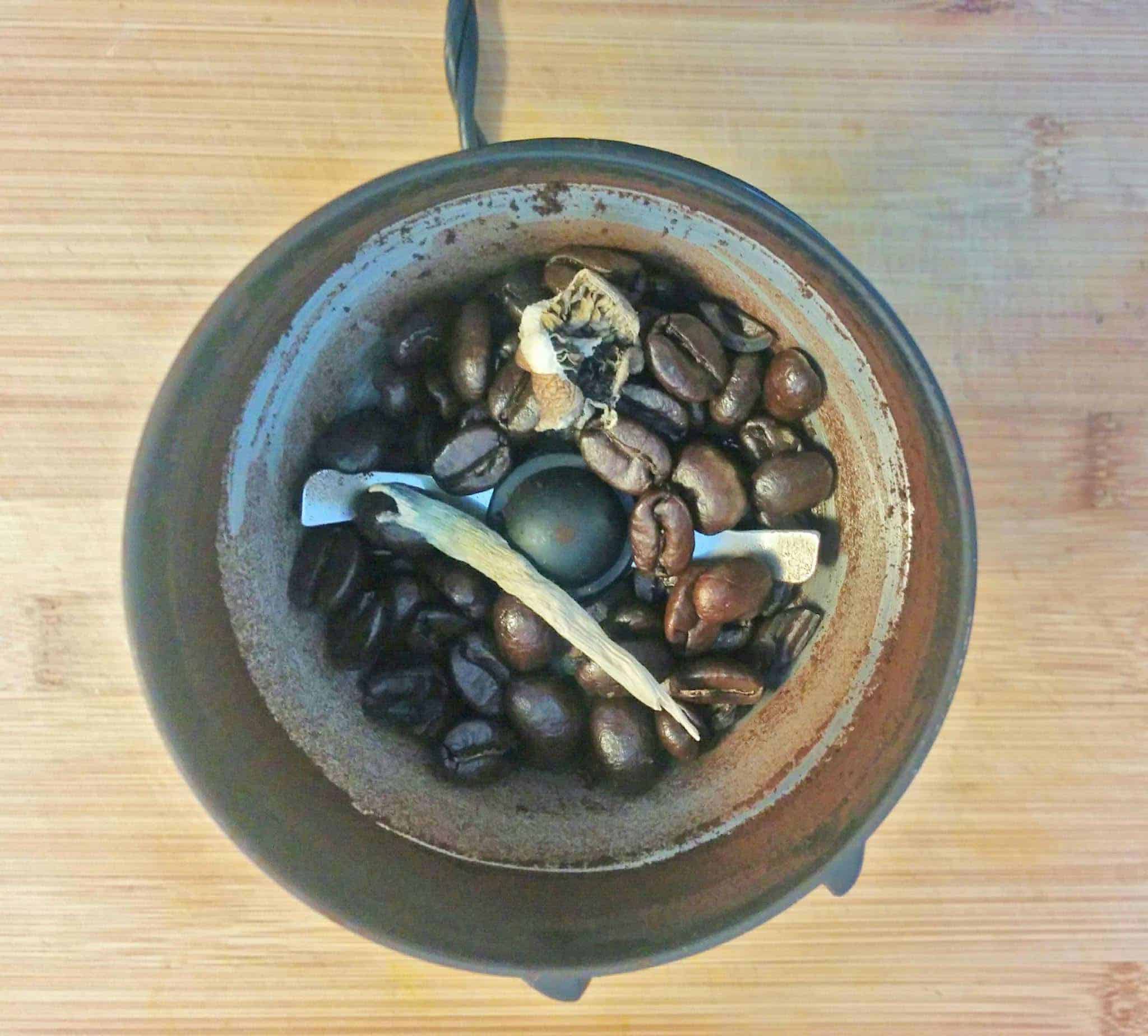
I add this size dose to my coffees on days off when I plan on doing some introspective work or simply taking a long walk or hike. By grinding the mushrooms into a fine grind along with the coffee, psilocybin’s bioavailability is increased and its effects hit sooner, with more power.
Stamets Stack Coffee Recipe
Paul Stamets’ neurogenesis protocol, known as the Stamets Stack, has suggested teaming psilocybin and lion’s mane mushrooms with niacin to facilitate the permeation of the blood-brain barrier. A cup of coffee contains about 20mg of niacin. You can easily add lion’s mane to this coffee (or tea) mix by adding it to the grinder. Let it brew for about 15 minutes. I use a Bodum coffee press, but you can add it to a drip coffee’s filter contents. To serve, I add a spoonful of brown sugar and cashew milk and don’t notice the taste of mushrooms, even with high doses. You can take yours however you take your tea or coffee.
If DIY is not your thing, a microdose psilocybin edible or capsules will work just as well. In particular, Psilly’s microdose caps provide lower doses starting at 50mg. You can graduate to higher doses using our comprehensive and delicious range of edibles.
Magic Mushroom Microdosing Benefits and Side Effects
While I was microdosing, I experienced no noticeable negative side effects, only positive results. I noticed an almost immediate cessation of my out-of-control fear response. Where regular stresses throughout the day would typically initiate intense heart palpitations lasting 10 minutes or more, this no longer happened. I used to wake most mornings with these same heart palpitations, and that no longer happened either. I knew that studies showed a reduction in amygdala engagement on psilocybin, so whether this was a placebo effect, I cannot accurately tell. But it was pronounced and immediate. It was as if a reset switch had been flipped. I am not prone to hyperbole: this was a revelatory experience which has had a lasting effect.
Halfway through my microdosing experience, around the 3-month mark, I stopped drinking alcohol for preventative, long-term health reasons and haven’t had a drop since. I used to crave a good IPA, but it seemed that substituting a mushroom coffee when I felt like having a little fun was sufficient to make me never think of alcohol. This didn’t surprise me, as studies have shown that psilocybin can be effective in treating alcohol addiction (not that this was ever an issue for me).
I also highlight this because Cipralex made it impossible to also enjoy any other substances responsibly. Whereas microdosing and macrodosing mushrooms alongside 1-4 beers produced no negative side effects for me.
When I began taking higher doses, there were some noticeable side effects. I wouldn’t describe them as negative, as they signalled that my body was still processing the psilocybin. Which in itself is an enjoyable and informative experience, as your mind becomes sensitive to what is happening in the body. After about one hour, when the high kicks in on macrodoses, a mixture of nausea, hunger, and needing to yawn becomes apparent. Whereas if I yawned or took a sip of water, this would relieve what felt more like an idea of these feelings, which could easily be controlled and even enjoyed with reframing.
What Type of Mushroom Helps With Anxiety?
Throughout my microdosing experience, I used three different kinds of psilocybin cubensis. In the literature, there is no specific type that helps. The main ingredient, psilocybin, is what makes the difference. However, other kinds of psychedelic mushrooms contain different types of hallucinogenic substances.
Does Microdosing Psilocybin Mushrooms Cure Anxiety?
The answer is ‘no’ with a large and significant ‘but.’ Anxiety is a complex, multi-dimensional malady that can express itself as a full-blown disorder, or happen sporadically. And each individual’s environment, circumstances, personality, and body chemistry, among other considerations, all affect how anxiety manifests in an individual.
SSRIs, the current medications for anxiety, don’t cure anxiety. Talk therapy doesn’t cure anxiety. But, instead of curing, they can help manage the symptoms. Anxiety can be further managed with therapeutic tactics like CBT (cognitive behavioural therapy). And as I can personally attest, magic mushrooms are highly effective at managing the symptoms of anxiety.
Anxiety management is not a cure, but an active engagement with an ongoing reality. Ultimately, anxiety cannot be cured by any one thing or any magic combination. Each individual’s circumstances will dictate the best way for them to manage their anxiety.
Further reading:
Magic Mushrooms and Mental Health
Why Do Magic Mushrooms Turn Blue?
